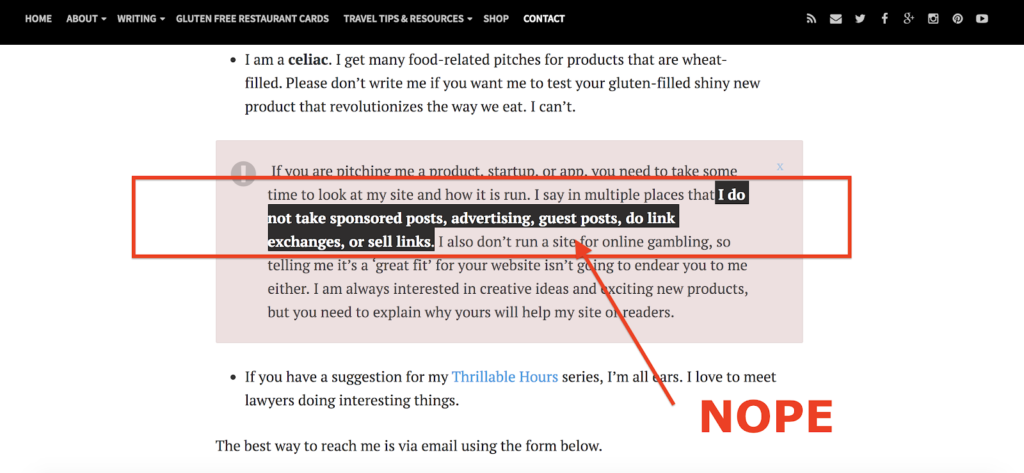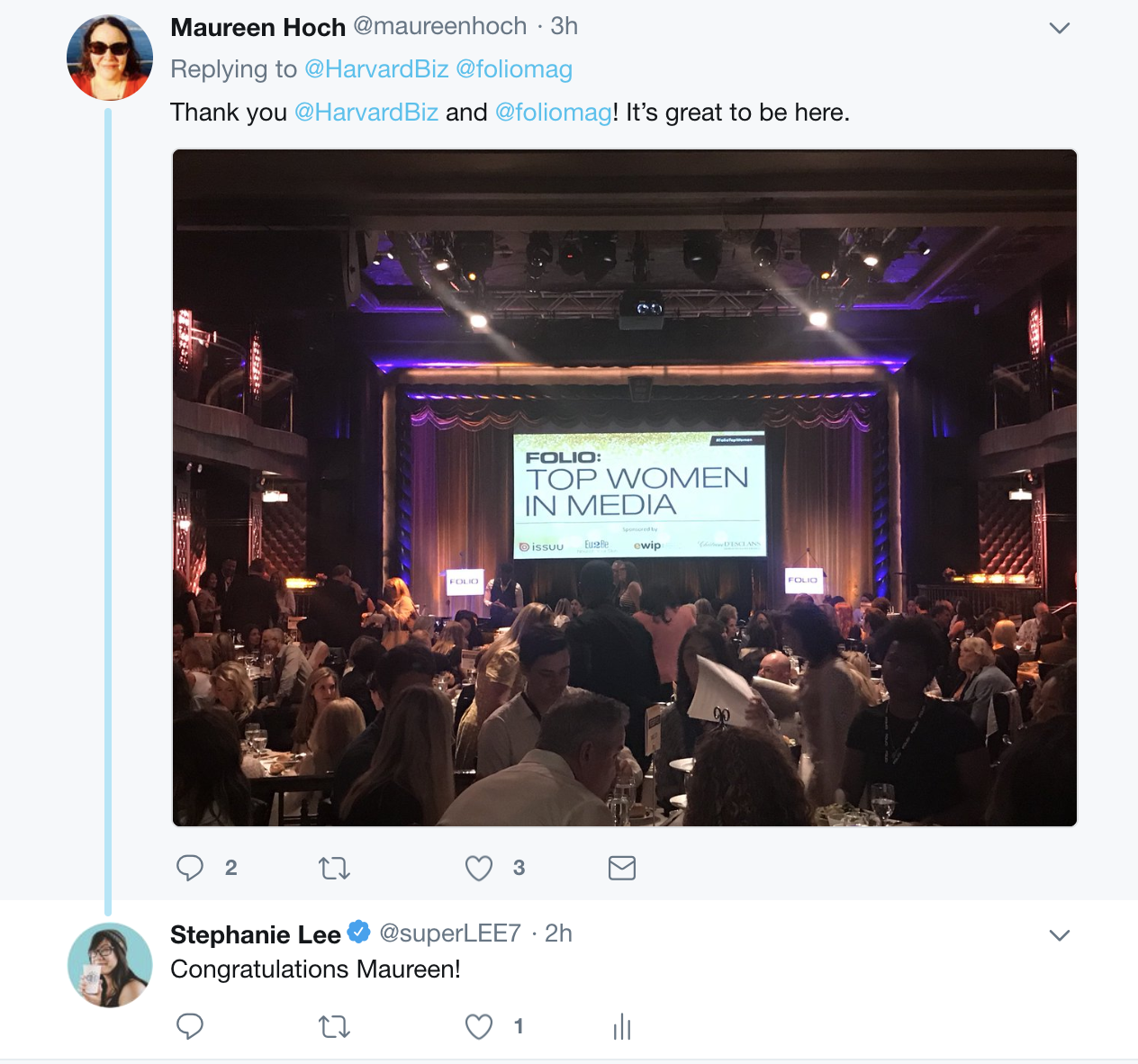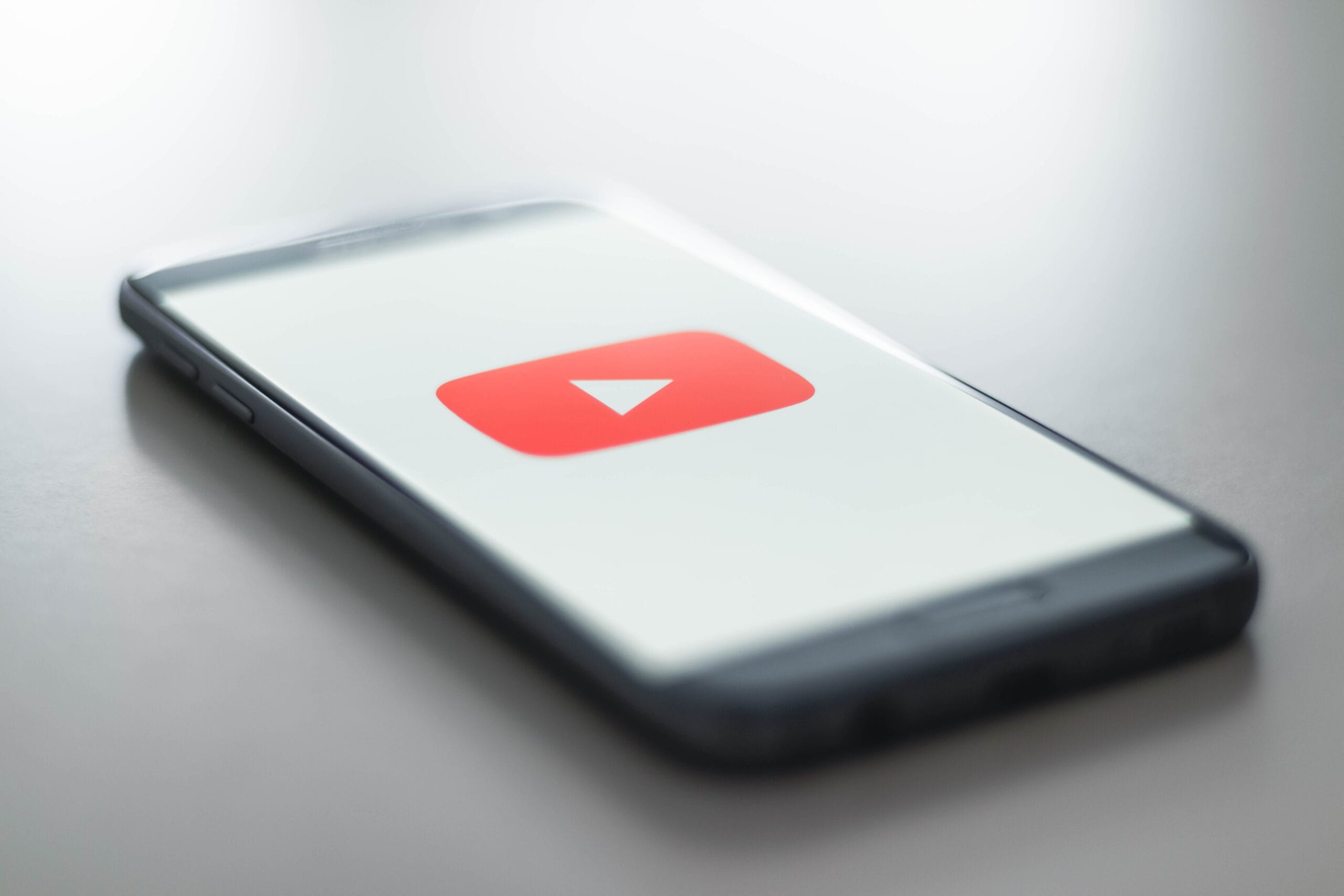
4 outreach emails every entrepreneur will write (and how not to screw them up)
As a former editor and writer with work published in places like Business Insider, Lifehacker, GQ, and The New York Times, I’ve received (with no exaggeration) thousands of cold outreach emails over the years.
And let me spill it to you: about 91% of them suck and don’t warrant a response.
Writing a not-so-sucky email is an art. With most outreach emails, the other person has no skin in the game, so it becomes a delicate dance leading up to your “ask” — whether it’s a request for a coffee meeting, wanting to contribute a guest post, or getting advice. Before you can write a great email, there are a few ground rules you should tattoo on your arm.
Important outreach rule #1: Have an eye for detail
There’s no quicker way to get your email dunked in the trash and be blacklisted forever than getting the recipient’s name wrong or misspelling it.
I know you “know” this, but I’m reminded every time I receive an email that gets my name wrong that some things are worth repeating. I’ve been called Brandon. Steve, even. And worse, “Dear webmaster.” My response:

Still, getting their name and those surface-level details right is the bare minimum.
Important outreach rule #2: Make clear the benefits for the other person
It’s easy to forget that the person on the other side of the computer screen is a human with their own agenda. When someone receives an unsolicited email, there are typically a few questions that linger in their mind:
- What is this?
- Why should I care?
- What’s in it for me?
If it’s not immediately clear to the recipient how reading your email benefits them, you’ll lose them.
Important outreach rule #3: Make it as easy as possible for them to respond
People demand the attention of busy people all the time. Think about their objections for your “quick coffee” before you hit send: Is this meeting convenient for them? Then they have to weigh other hidden costs, such as working on something more important for those “30 minutes.”
Important outreach rule #4: Nobody owes you a response
There are myriad reasons someone doesn’t get back to you: Maybe they’re busy. Maybe they legitimately missed your email. Or maybe, just maybe, you asked for too much without a clear benefit to them. We can’t force people to like us or do anything that we ask, let alone reply to us.

It’s not “me, me, me.” It’s them, them, them. The other person has more important things to do and care about than you.
And lest we forget: nobody owes you anything.
Like this blog post? Learn how to create amazing content like this that attracts and engages your target buyers with our FREE Ultimate Guide To Remarkable Content.
4 types of common outreach emails
1. Writing a guest blog post
Your burning desire to write a guest post alone isn’t going to sway anyone. Before you even write that email to ask to guest post, you should check a few things:
- After familiarizing yourself with their site and existing content, have you come up with a few relevant ideas that fall in line with what their audience would want to read?
- More important, has the blogger already written about your idea (e.g. why should they care)?
- Is the blogger or website even accepting guest posts? Usually, they would say so in the Contact page (example below) or have bylines from more than one person, or you can Google “<name of website> submission/contribute/guest post” (pick one each time you check).

If they do accept outside submissions, make damn sure that you follow their specific directions for your submission, if any. Typically, this is their way of weeding out those who cannot follow simple directions. And if there’s no contact form for you to fill out, try the following email template:
NAME,
I’m NAME, and I’ve been following [your blog] for some time. I love your ethnic diabetic healthy recipes that are also tasty!
I just started a website on eating ethnic healthy food to lose weight and recipes. I just wrote a post about how a practical way to stay healthy is to eat food that tastes really good, with spices and flavor. Here’s a link if you have a chance to check it out. [LINK TO ARTICLE]
I thought expanding on the topic might be interesting to your readers. This weekend, I’m going to be sharing a recipe only for my readers about a tasty lentils recipe that helped me lose 10 pounds. If you are interested, I could write it instead for your readers as a guest post. Let me know if you would be interested.
A few things:
- The email opens up with the fact that the sender has been a fan of the website for some time.
- People love compliments and love to know that you have been following their work, and this makes it more likely that they will keep reading.
- It establishes similarities and a connection, and then goes on to drop a link to an article that would be of interest to them and their readers.
The last point is an important step when requesting to write a guest post: You want the blogger to be able to assess whether they could see your writing on their site.
Publications spend a ton of time cultivating their brand and audience, and want to be confident that you can blow their readers’ minds. After all, their reputation is on the line. If they liked your article and how you wrote it, there’s a good chance they would want you to write something similar for their site.
If you want to nail guest posting, here’s a resource I wrote on the two most important things for greater success with guest posting (with REAL pitch examples).
2. Pitching a journalist
So…don’t reach out to the media like these guys.
Ulyses Osuna, founder and CEO of a PR firm called Influencer Press, offers this warning: “The biggest mistake people make when first pitching is thinking the journalist owes them a story. They come off as demanding, uncaring for the person they’re pitching and just reckless in their pitch.”
Bingo.
You can use this to your advantage: lower any barriers between you and any media coverage you want, said Osuna. This means look at it from their perspective: they have to find credible data, write and edit the article, and many other things. Here’s a real email Osuna sent to a journalist at Forbes:
Hey NAME! I wanted to pitch you an angle that I think would fit your column really well. I know you haven’t written for about four months, but maybe this angle will help change that.
What do you think about an article like this?
How This Millennial Built a Thriving Business by Selling Custom Shoes to Celebrities
Or if you think that’s too over-promotional we can switch it up to something like this:
5 Ways to Make More Money in College Even if You’re Not Business Savvy
I have a friend/client who I think would be able to provide a lot of value to your audience on this topic since he’s a millennial that’s still in college and because he’s built a business around selling custom shoes to celebrities.
Some of the celebrities include 50 Cent, Rick Ross, Jason Derulo, and J Balvin.
They also recently got a major press piece from Business Insider through Facebook that received XX views.
<link>
Is this an angle you’d be interested in? I can make the intro or make the process easier by providing a reference article. If not — no worries, I appreciate you hearing me out!
Notice:
- Osuna provided detail for the journalist to determine if it’d be a good fit, but also gave the journalist an option to opt out.
- The email also gave the journalist clear ideas and direction on where they could take the article. (Sometimes journalists don’t want to think so hard, so if you can connect the dots for them it gives them a solid jumping off point and it’s easier for them to envision the finished article.)
- Osuna offers social proof (“Some of the celebrities include 50 Cent, Rick Ross…”).
“Chances are, when you first email [the journalist], they have no idea who you are. So by providing the social proof and credibility, they don’t need to know who you are because you’re already aligning yourself with the people or companies you’ve name-dropped,” explained Osuna.
3. Asking for feedback or advice
Here’s where you reallllllyyyy want to research that person to make extra sure that you don’t ask a question or for advice that you could’ve easily looked up.
“If you reach out asking for advice on a topic they’ve already thoroughly covered in an article or podcast, it shows you haven’t done any research,” said Bud Hennekes, whose outreach successfully landed him a gig with Gary Vaynerchuk.
“I see many people want to meet with entrepreneurs or influencers to ‘pick their brain.’ But most of them are content creators with articles, YouTube videos, books, podcasts, and interviews everywhere,” added Tam Pham, head of education at Bot Academy and author of “How to Network: Build Instant Trust & Respect With Anyone You Meet.”
So make sure you’ve already combed through all of their content on their blog, YouTube channel, podcasts, or wherever before you reach out. Then, frame your ask as specifically as possible:
Hey NAME,
I’m thinking of starting a course or a website on [Blog Concept]. And I’ve been doing my homework and as far as I understand the biggest challenges seem to be [Item A], [Item B], and [Item C].
I saw your post on [Subject] and I thought it was similar to what I want to write about. And I think I have it right, but I just wanted to see if you agree with that, because I know you have a lot more experience than me. Any thoughts?
Also, please don’t ever use the phrase “pick your brain.” Shudder.
4. Requesting a coffee meeting
If you’re reaching out to someone more influential than you are, the first thing to do when requesting a coffee meeting?
Don’t ask for a coffee meeting.
First, it helps to be intimately familiar with their work and actually “talk” to them on a regular basis. That means replying to their emails if you’re an email subscriber, responding to their tweets or public Facebook posts, sending an email showing that you enjoyed something of theirs, and generally popping up on their radar.
They don’t have to be epic responses. Keep it simple and relevant to what they’re already saying. Here’s an example of me just “showing up on someone’s radar”:

Super easy. Even if they don’t respond, they pay attention:
All of this adds up over time, and when you finally ask for that meeting, they already sort of know who you are, said Pham. At that point, you can simply say something like:
Hi NAME,
I’m in town for a couple of days, between June 2 – 6. If your schedule works out, I’d love to meet for coffee. I’m free all afternoon on Monday, June 4, and Tuesday evening, June 5. I can come to wherever is convenient for you at any of those times. Let me know if any of those times work for you. If not, no problem either!
But if you feel like you want to take your chances with a coffee meeting right off the bat, here’s an example of a hail-mary email (that caught our CEO’s attention):
Hi NAME,
My name is NAME. I’m an ‘04 grad from Michigan State and I came across your name on our alumni site.
I’d love to get your career advice for 15-20 minutes. I’m currently working at Acme Tech Company, but many of my friends work in consulting and each time they tell me how much they love their job, I get more interested.
Most of them have told me that if I’m interested in consulting, I have to talk to someone at Deloitte. Do you think I could ask you about your job and what motivated you to choose Deloitte? I’d especially love to know how you made your choices after graduating from Michigan State.
I can meet you for coffee or at your office … or wherever it’s convenient. I can work around you!
Would it be possible for us to meet?
The most important takeaway from this is that it’s been set up so that the recipient knows why this person is reaching out and it’s easy for them to say “yes.”



